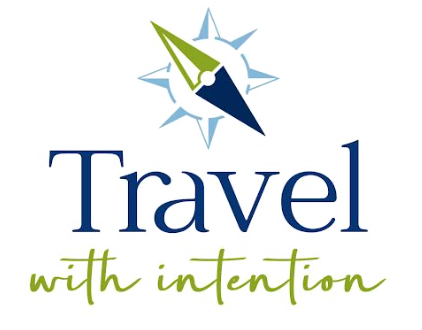Utah, located in the United States, is home to some of the most stunning national parks in the country. Known as the “Utah Mighty 5,” these parks include Zion National Park, Bryce Canyon National Park, Capitol Reef National Park, Arches National Park, and Canyonlands National Park. Each park boasts unique rock formations, beautiful landscapes, and thrilling outdoor adventures that attract millions of visitors annually. In this article, we will provide you with a comprehensive guide to help you plan an epic road trip to these Utah national parks, starting from Las Vegas.
A Utah national parks itinerary from Las Vegas takes into consideration that Las Vegas is a popular tourist destination that serves as an excellent starting point. With its well-connected transportation network and numerous car rental options, embarking on a road trip from Las Vegas allows for easier access to Utah’s national parks. Moreover, Las Vegas offers a variety of entertainment, outdoor activities like Red Rock Canyon, and accommodation options to enjoy before and after your trip. By starting your adventure in Las Vegas, you can combine the excitement of the city with the breathtaking beauty of Utah’s natural wonders.
Table of Contents
Best time to visit Utah’s national parks
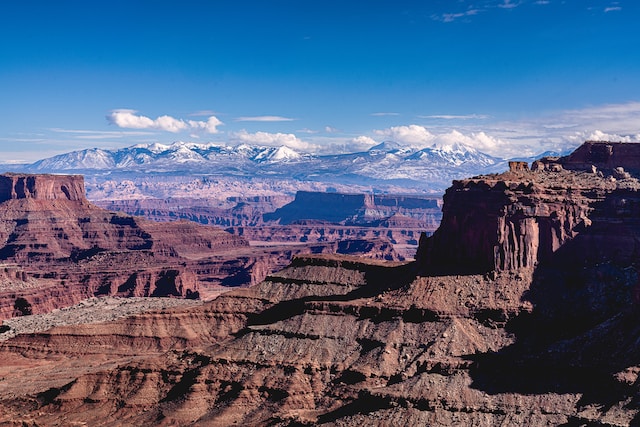
The best time to visit Utah’s national parks varies depending on your preferences. Summer months (June to August) are the high season, offering warm temperatures and longer daylight hours, ideal for hiking and other popular activities. However, expect larger crowds and potentially limited parking during this time. The shoulder seasons of spring (March to May) and fall (September to November) provide pleasant temperatures and fewer crowds, making them a great option for those seeking a more peaceful experience. Winter months (December to February) offer a unique, snowy perspective on the parks but may have limited accessibility due to weather conditions. We chose to follow this national parks road trip itinerary during the spring. This was the best way for us to enjoy good weather as well as avoid the crowds.
Preparing for the Road Trip
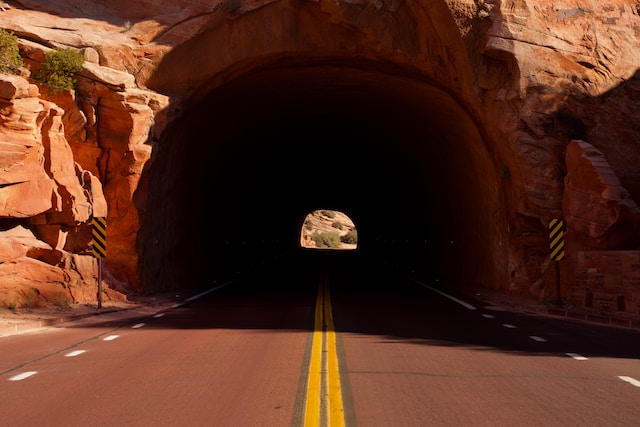
Rental car options and considerations
When planning your Utah national parks road trip, choosing the right rental car is crucial. Las Vegas offers numerous rental car agencies, providing a wide range of vehicles to suit your needs. Consider factors such as the number of passengers, luggage capacity, fuel efficiency, and vehicle type (sedan, SUV, or van) before making a decision. Additionally, ensure you have a valid driver’s license and are aware of any additional costs, such as insurance and one-way rental fees, before booking your rental car. For example, if you choose to fly into Las Vegas and rent a car there, but catch your return flight out of Salt Lake City then you will have an additional cost of a one-way rental to add to your budget. We did this as the convenience was worth the additional expense for our circumstances.
Additional costs to consider
While planning your road trip, be mindful of additional costs you may incur during your journey. These can include park entrance fees, accommodation expenses, healthy food options and drinks, guided tours, and gas expenses. Creating a budget beforehand and researching ways to save, such as purchasing an America the Beautiful pass can help you enjoy your trip without breaking the bank. The America the Beautiful national park pass costs $80 and is valid for one year from the month of purchase. The lifetime senior pass is also $80 and is available to US citizens and permanent residents 62 years and older. This extra cost is a good option as it can save the pass holder quite a bit of money if planning to visit multiple parks that charge admission fees.
Packing essentials for the trip
Packing the right essentials for your Utah national parks road trip will ensure a comfortable and enjoyable experience. Make sure to include items such as proper clothing and footwear for varying weather conditions, a first-aid kit, sunscreen, insect repellent, reusable water bottles, snacks, and a cooler for perishables. Additionally, pack essential gear for outdoor activities, such as hiking shoes, hats, and trekking poles, if needed. And on a road trip packed with this much natural beauty one of the best things you can bring is your camera or smartphone to capture the breathtaking landscapes and wonderful memories.
Las Vegas to Zion National Park
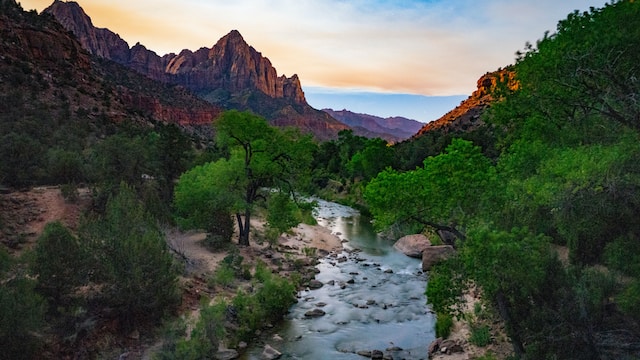
Drive time and scenic route options
Embarking on your Utah national parks road trip from Las Vegas, the first destination is Zion National Park. The drive takes approximately 2.5 hours and covers a distance of roughly 160 miles so getting an early start is very helpful. For a more scenic route, consider taking a slight detour to drive along the Virgin River Gorge, where you’ll enjoy beautiful views of the river and surrounding rock formations. This picturesque drive is sure to make your journey enjoyable.
Get Your Travel Goals Newsletter & BONUS Workbook
Before reaching Zion National Park, consider stopping at Valley of Fire State Park, located just an hour from Las Vegas. This stunning park features vibrant red sandstone formations, petroglyphs, and unique hiking trails. Valley of Fire is one of the best places for a short hike or a picnic while taking in breathtaking landscapes. Don’t forget to take plenty of photos of the fiery rocks, which are particularly impressive during the early morning and late afternoon hours.
Zion National Park highlights
- Upon arriving at Zion National Park, your first stop should be the visitor center, where you can gather essential information about the park, trail conditions, and shuttle services. During the high season, the park’s free round-trip shuttle service is mandatory for accessing popular trails and viewpoints, as private vehicles are restricted in certain areas. Plan your day around the shuttle schedule to ensure you make the most of your time at the park.
- Zion National Park offers an array of hiking opportunities for all skill levels. Some of the best hikes include the challenging Angel’s Landing, which requires a permit but comes with stunning views from the top. The Narrows is a unique hike through the narrowest section of Zion Canyon. Visitors trek the shallow river waters and stand in awe of the sheer cliffs on each side. Both hikes are popular attractions and can become crowded during peak times, so starting early is recommended.
- To avoid the heat and crowds, plan some of your Zion National Park activities for the early morning or late afternoon. Enjoy a scenic drive through the park during these times or take advantage of fewer crowds at popular trailheads. Additionally, the soft lighting during sunrise and sunset makes for excellent photography opportunities.
Get Your Travel Goals Newsletter & BONUS Workbook
- Kolob Canyon, a lesser-known section of Zion National Park, is located approximately an hour’s drive from the main park entrance. This 55-minute drive from the visitor center brings you to a secluded area that boasts incredible red rock formations and picturesque hiking trails, providing a more tranquil experience away from the crowds.
- When visiting Zion National Park, it’s essential to be aware of the potential for flash floods, especially during the summer months. Check weather forecasts and heed any warnings from park rangers to ensure your safety. Avoid entering narrow canyons during or after heavy rainfall, and familiarize yourself with the park’s safety guidelines.
Zion National Park to Bryce Canyon National Park
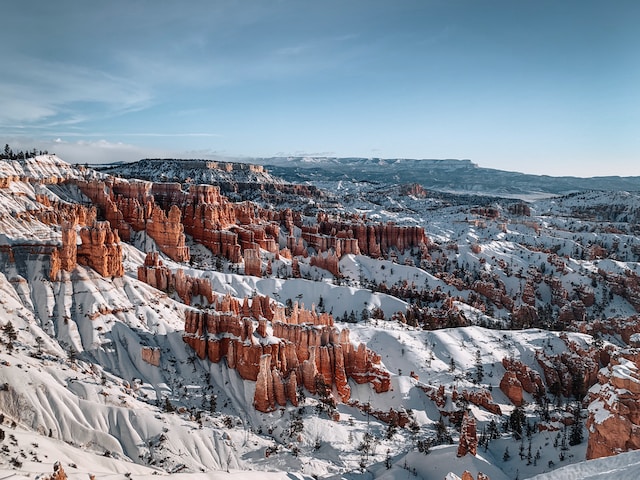
Drive time and scenic route options
The drive from Zion National Park to Bryce Canyon National Park takes approximately two hours, covering a distance of roughly 85 miles. The journey offers beautiful views of the southern Utah landscape, with the scenic byway passing through tunnels, forests, and red rock formations. Be sure to give yourself plenty of time and stop at various viewpoints along the way to fully appreciate the diverse scenery.
Bryce Canyon National Park highlights
- Bryce Canyon National Park is known for its impressive hoodoos and one-of-a-kind viewpoints. Some of the best spots to take in the views are Sunrise Point, Sunset Point, and Inspiration Point. Each of these locations offers a unique perspective on the park’s remarkable geological formations, and they’re especially beautiful during sunrise and sunset. The short walk from the parking lot along a paved pathway makes these spots as accessible as they are beautiful.
- Bryce Canyon National Park offers various hiking trails suitable for all skill levels. The Rim Trail, 5.5-mile hike which runs along the edge of the canyon, offers stunning views of the hoodoos below and can be accessed from several points, which (good news!) makes it easy to customize the length of your hike. Another popular option is the Navajo Loop, which takes you down into the heart of the canyon, providing an up-close look at the park’s iconic rock formations. Be sure to check trail conditions at the visitor center before embarking on your hike.
- Aside from the main viewpoints and popular hikes, Bryce Canyon National Park also features lesser-known attractions worth exploring. Wall Street, a narrow canyon filled with towering hoodoos, is one such hidden gem. Accessible via the Navajo Loop trail, this unique spot provides an opportunity to experience the park’s beauty away from the crowds.
Get Your Travel Goals Newsletter & BONUS Workbook
- Bryce Canyon National Park is known for its exceptionally dark skies, making it an ideal location for stargazing. The park offers night sky programs throughout the year, allowing visitors to learn about the constellations and celestial events while enjoying the beauty of the stars. Check the park’s schedule for upcoming programs, or simply find a secluded spot away from artificial light to enjoy the night sky on your own.
With these highlights in mind, you’ll have plenty to explore as you continue your epic road trip through Utah’s national parks. Don’t forget to take plenty of photos, stay hydrated, and respect park guidelines to ensure a great time for all visitors.
Bryce Canyon National Park to Capitol Reef National Park
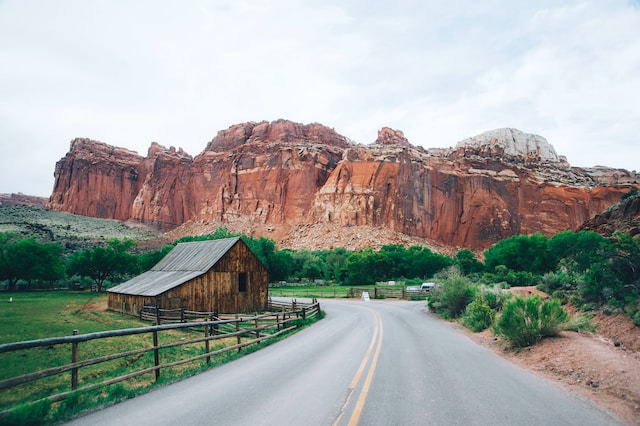
Scenic Byway 12 and drive time
Continuing your Utah national parks road trip, the journey from Bryce Canyon National Park to Capitol Reef National Park takes approximately two and a half hours, covering a distance of around 125 miles. While that may not seem like much time, this drive offers stunning views and diverse landscapes along Scenic Byway 12, widely considered one of the most beautiful drives in the United States. Be sure to allocate extra time to stop at various viewpoints and soak in the magnificent scenery along the way.
As you travel along Scenic Byway 12, you’ll pass through the vast Grand Staircase-Escalante National Monument, a protected area known for its unique geological features, including slot canyons and colorful cliffs. This expansive monument offers countless opportunities for hiking, canyoneering, and photography, making it worth a day trip on its own but for our itinerary, it’s an excellent stop during your Utah road trip.
Capitol Reef National Park highlights
- Upon arriving at Capitol Reef National Park, don’t miss the chance to explore the Waterpocket Fold, a massive geological feature extending for nearly 100 miles. Scenic drives, such as the Capitol Reef Scenic Drive and Burr Trail, provide an excellent way to experience the park’s diverse landscapes, including its striking rock formations and desert vistas. The main scenic drive will lead you to dirt spur roads that access either Capitol Gorge or Grand Wash. Don’t be intimidated by the dirt road as they are suitable for passenger cars and lead to some of the best hikes in the park!
- Capitol Reef National Park boasts numerous hiking trails that cater to all skill levels. Some of the best hikes include Hickman Bridge, a short hike leading to a stunning natural bridge, and Cohab Canyon, which offers incredible views of the park’s unique rock formations. Consult with park rangers at the visitor center for the latest trail conditions and recommendations based on your interests and abilities.
- While exploring Capitol Reef National Park, be sure to visit the historic orchards and the Gifford House, a charming homestead-turned-museum. Here, you’ll learn about the park’s early settlers and enjoy freshly baked pies and other delicious treats made from fruit grown in the park’s orchards.
Get Your Travel Goals Newsletter & BONUS Workbook
- Capitol Reef National Park is also home to ancient petroglyphs and cultural history dating back thousands of years. Be sure to stop at the petroglyph panels along the park’s main road to get a glimpse into the lives of the area’s early inhabitants.
Capitol Reef National Park to Arches National Park
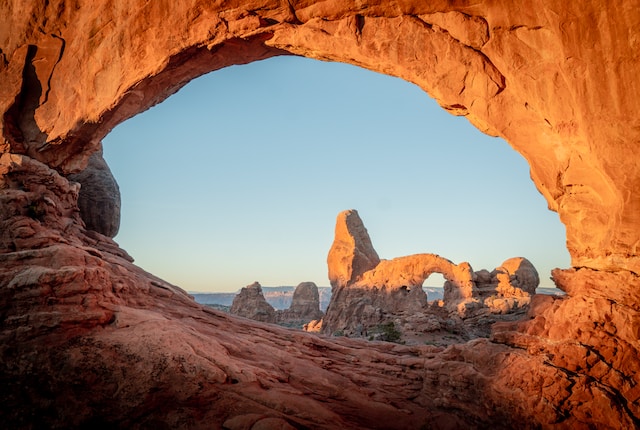
Drive time and stop at Goblin Valley State Park
The drive from Capitol Reef National Park to Arches National Park takes around 2 hours and covers approximately 130 miles. You can break up the long drive by stopping at Goblin Valley State Park, a unique landscape filled with thousands of peculiar, mushroom-shaped rock formations called hoodoos. This fascinating park offers several short hikes and excellent photo opportunities. The busiest times of day for the park are from 10 AM to 4 PM and you can expect a delay of 1 – 2 hours due to cars backed up from the entrance gate, especially on weekends or holidays.
Arches National Park highlights
- Arches National Park is world-famous for its more than 2,000 natural sandstone arches, including the iconic Delicate Arch. Be sure to take the time to hike to Delicate Arch or view it from the lower or upper viewpoints, along with other popular rock formations such as Landscape Arch and Double Arch.
- Arches National Park offers a variety of hiking trails for all skill levels. Among the best hikes are Park Avenue, a relatively easy hike that takes you through a stunning canyon lined with towering sandstone walls, and Devil’s Garden, a more challenging trail featuring several impressive arches.
- The park also offers several scenic drives and viewpoints, allowing visitors to take in the breathtaking landscapes from the comfort of their cars. The 18-mile Arches Scenic Drive showcases some of the park’s most famous arches and rock formations, with plenty of opportunities to stop and snap photos or embark on short hikes.
- Like Bryce Canyon National Park, Arches National Park is known for its incredible dark skies, providing the perfect backdrop for stargazing. The park regularly hosts night sky programs, where you can learn about constellations, celestial events, and the importance of preserving dark skies. If you prefer a more intimate experience, find a secluded spot away from artificial light and enjoy the celestial show on your own.
Get Your Travel Goals Newsletter & BONUS Workbook
As you continue your epic Utah national parks road trip, remember to plan your days around the best times to visit each park’s popular attractions, stay hydrated, and respect park guidelines to ensure a safe and memorable experience. Utah’s stunning landscapes and unforgettable experiences will undoubtedly leave you with memories that last a lifetime.
Arches National Park to Canyonlands National Park
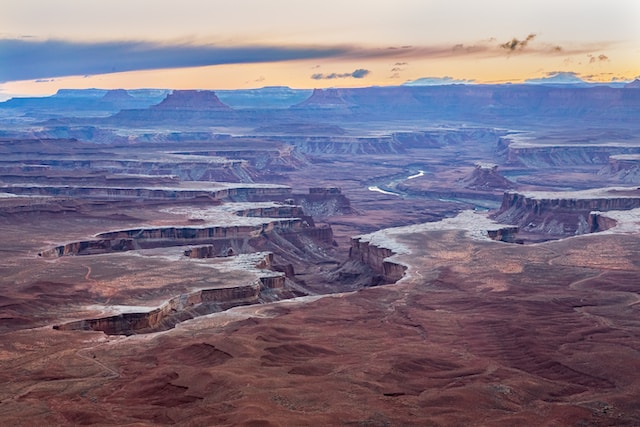
Drive time and optional detour to Dead Horse Point State Park
After exploring Arches National Park, it’s time to head to Canyonlands National Park, which is just a short drive away. The drive from Arches to Canyonlands takes approximately 45 minutes to an hour, depending on traffic. If you have extra time, consider taking a detour to Dead Horse Point State Park, a hidden gem known for its stunning views of the Colorado River and the surrounding canyons. This park offers short hikes, mountain biking trails, and a breathtaking overlook that rivals the more famous Grand Canyon vistas.
Canyonlands National Park highlights
- Island in the Sky District
a. Mesa Arch and Green River Overlook
Canyonlands National Park is divided into three districts, with the Island in the Sky being the most accessible and popular. Begin your exploration at the Island in the Sky Visitor Center, where you can gather information and plan your day. A must-see in this district is the famous Mesa Arch, which offers an incredible view of the surrounding canyons and the Green River below. Time your visit for sunrise, and you’ll be rewarded with a stunning spectacle as the sun illuminates the underside of the arch.
b. Grand View Point and short hikes
Another must-visit spot in the Island in the Sky District is Grand View Point. This overlook offers sweeping views of the canyon country below, and a short, easy hike along the rim allows for multiple perspectives of the unique landscape. Several other short hikes, such as the Upheaval Dome and White Rim Overlook, offer additional opportunities to explore the beauty of this district. Those with less time could catch the highlights of Canyonlands by simply enjoying the scenic drive in this district and making shorter pit stops at overlooks.
- The Needles District
The Needles District, located about 1.5 hours from the Island in the Sky, is known for its distinctive sandstone spires, natural bridges, and a more rugged landscape. If you have an extra day you could spend hours here just on the scenic drives in this district that offer striking views, with the Elephant Hill Road and the Colorado River Overlook being two popular choices. b. Longer hikes and backpacking opportunities
For those seeking more challenging hikes, the Needles District offers a variety of options. Trails like the Chesler Park Loop, Druid Arch, and the Joint Trail showcase the district’s unique rock formations, slot canyons, and panoramic vistas. Backpacking opportunities also abound in this district, allowing visitors to fully immerse themselves in the wilderness.
- The Maze District
a. Remote wilderness and multi-day adventures
The Maze District, the most remote and least visited of the three districts, is a haven for adventurers seeking solitude and rugged wilderness. Accessible only via dirt roads and requiring high-clearance, four-wheel-drive vehicles, the Maze offers a true backcountry experience.
b. Extra time and special permits required
Visiting the Maze District requires extra time, careful planning, and often special permits. Multi-day hikes and off-road expeditions are popular in this district, but be prepared for self-sufficiency, as there are no amenities or services available. Remember when considering this adventure, your typical rental car will not be of use to you here. If planning a visit consider renting a four-wheel-drive vehicle in the Moab area.
Canyonlands National Park to Monument Valley
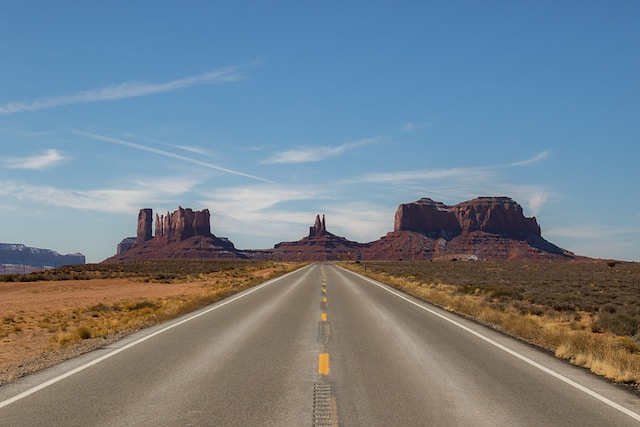
Drive time and scenic route options
Leaving Canyonlands National Park, your next destination is the iconic Monument Valley, approximately a 2.5-hour drive away. The long drive is worth it as it takes you through the vast and varied landscapes of southeastern Utah, offering opportunities for photo stops and detours to explore other natural wonders.
Monument Valley highlights
- Monument Valley, located on the border of Utah and Arizona, is an unforgettable sight, with its towering sandstone buttes and iconic red-rock formations. To experience the full beauty of Monument Valley, consider joining a guided tour led by members of the Navajo Nation, who can share their knowledge and stories about the area’s cultural and natural history. If you prefer to explore at your own pace, a self-guided scenic drive along the 17-mile Valley Drive allows you to take in the most famous landmarks, such as the Mittens and the Totem Pole.
- Monument Valley’s dramatic landscape has served as a backdrop for countless movies, commercials, and photographs. The towering sandstone formations, such as the Mittens, the Three Sisters, and the Ear of the Wind, are truly awe-inspiring. As you explore the valley, you’ll quickly understand why it has become such an enduring symbol of the American Southwest.
- Monument Valley is located within the Navajo Nation, which offers visitors a unique opportunity to learn about the culture, history, and traditions of the Navajo people. While in the area, consider visiting the Navajo Nation Museum, attending a cultural performance, or purchasing traditional Navajo crafts, such as rugs and jewelry, directly from the artisans themselves. Engaging with the local culture will provide a deeper understanding of this beautiful and storied region.
Get Your Travel Goals Newsletter & BONUS Workbook
Optional Side Trips and Extensions
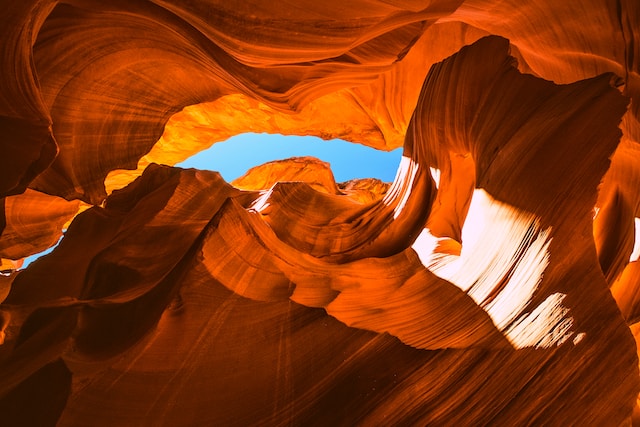
A. Antelope Canyon and Horseshoe Bend
If you have some extra time during your Utah national parks road trip, consider visiting Antelope Canyon and Horseshoe Bend, both located near the city of Page, Arizona. Antelope Canyon, a stunning slot canyon, is renowned for its incredible sandstone formations and light beams that illuminate the canyon walls. Access to Antelope Canyon is available only through guided tours led by Navajo guides. Horseshoe Bend, a short drive from Antelope Canyon, offers a breathtaking view of the Colorado River as it wraps around a sandstone cliff, creating a horseshoe-shaped bend.
B. Lake Powell and Glen Canyon National Recreation Area
Lake Powell, situated in Glen Canyon National Recreation Area, is a fantastic destination for water enthusiasts, offering opportunities for boating, fishing, and swimming. Additionally, there are several beautiful hiking trails and scenic drives throughout the recreation area. Glen Canyon Dam, located nearby, is an impressive engineering feat worth visiting as well.
C. Grand Canyon National Park and Grand Canyon Village
Extending your road trip to include Grand Canyon National Park is a great option if you have the time. The South Rim of the Grand Canyon, with its accessible viewpoints and well-maintained trails, is the most popular area to visit. Grand Canyon Village, located within the park, offers accommodations, dining options, and visitor services, making it a great place for exploring the canyon’s beauty.
D. Great options for additional state parks and national monuments
There are numerous other state parks and national monuments to explore in the region, such as Natural Bridges National Monument, Bears Ears National Monument, and Coral Pink Sand Dunes State Park. These locations offer unique landscapes, cultural history, and outdoor recreation opportunities that can enhance your road trip experience.
Returning to Las Vegas or Salt Lake City International Airport
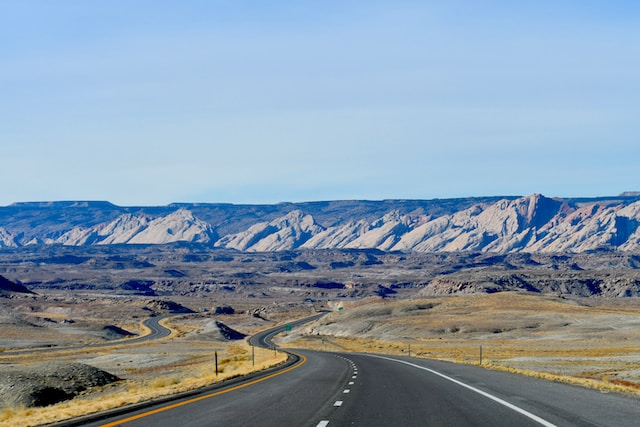
As your epic Utah national parks road trip comes to an end, you’ll have the option to return to Las Vegas or continue to Salt Lake City International Airport. The drive time and route will depend on your final destination, but either choice offers opportunities for additional sightseeing or stops at state parks and national monuments.
Inspired by your Utah national parks road trip, you may be eager to plan more adventures across the United States. As you consider future road trips, whether they be a coastal adventure up the PCH or a wild opportunity to explore a slice of Alaska, remember the importance of thorough research, taking the time to learn about the best times to visit, packing essentials, and planning your route to make the most of your journey.
